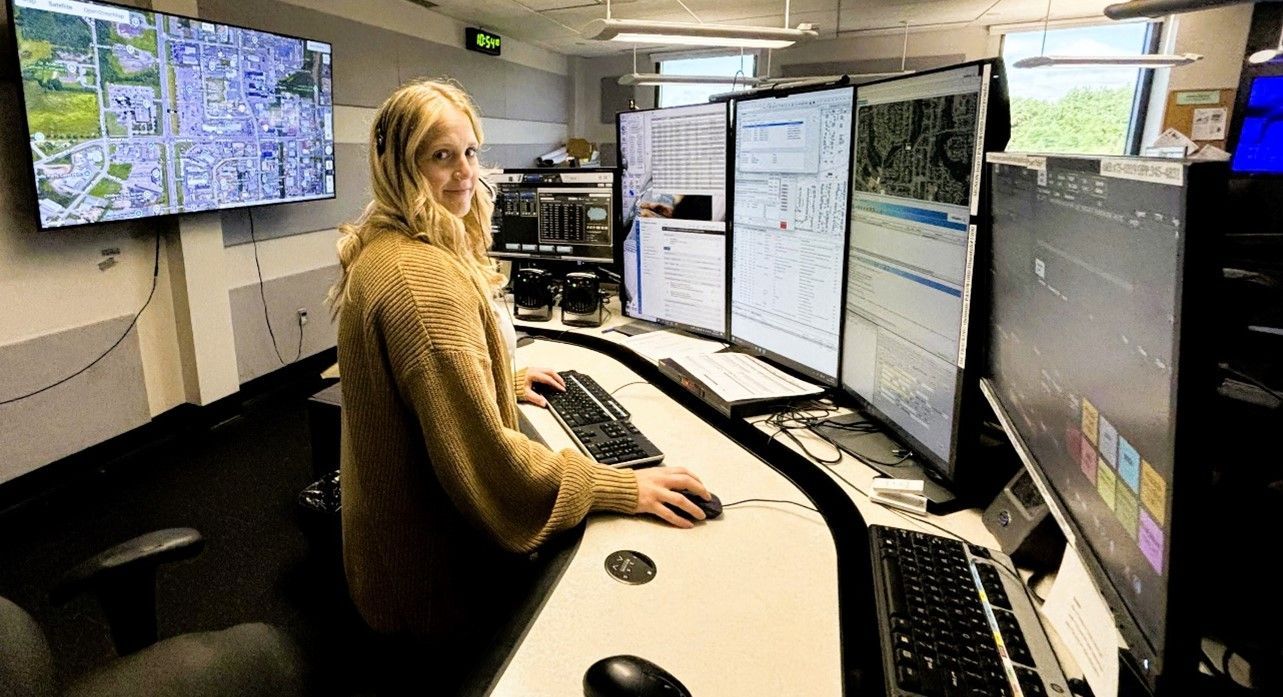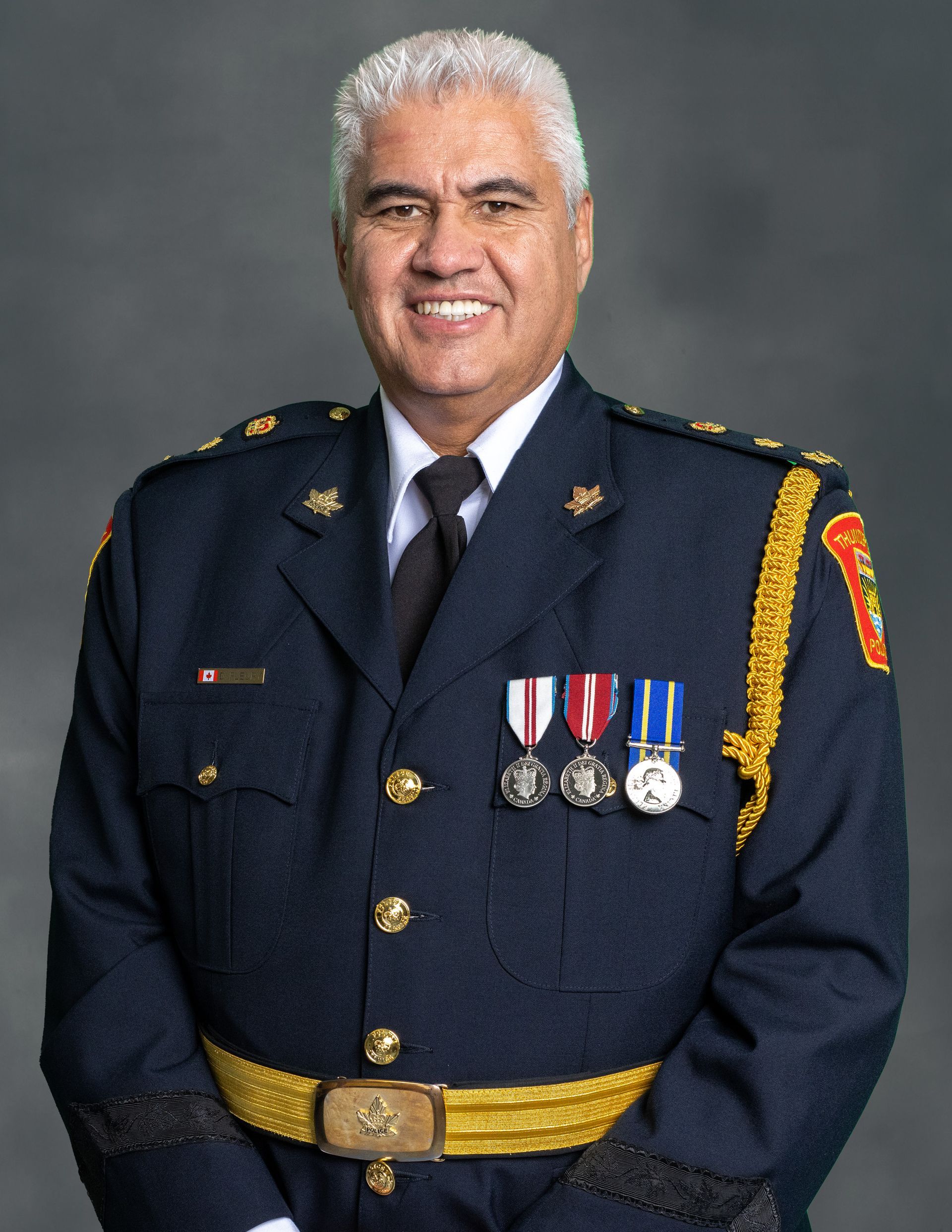September 2025

The Thunder Bay Police Service continues its Chat with the Chief community information sessions this fall.
"As your Chief of Police, I believe open dialogue is the foundation of trust,” said TBPS Chief Darcy Fleury. “These events are your space to ask questions, voice concerns, and help us build a safer, stronger community together. Every comment matters, and every voice is welcome."
Join Chief Darcy Fleury:
- October 15 at 6:00 pm at the Mary JL Black Library
- November 12 at 12:30 pm at Confederation College
Everyone is welcome to submit questions in advance at https://forms.office.com/r/gr91tUJkkv.
A 911 call unfolds
There's been a motor vehicle accident and someone is injured. Several witnesses call 911.
At the Thunder Bay Police Service headquarters, communications operators first confirm the location and nature of the incident. They then enter the information into a dispatch system that prioritizes calls based on urgency.
Coordinating the response:
- Both police and Thunder Bay Fire Rescue (TBFR) are dispatched, since there is an injury, possible extrication may be required and/or hazards around the damaged vehicles.
- Operators connect callers with Superior North EMS to assess the medical needs, dispatch their units, and give first aid instruction to the caller.
- The TBPS and TBFR Dispatcher keep in contact with police and firefighters to share information to aid their response.
- Operators collect contact information of callers/witnesses for possible follow-up.
On the scene:
- Saving lives is the priority for all responders. Once victims are given aid and made safe, the Sergeant on scene will decide if the accident requires an investigation. If so, the road may be closed to preserve the scene and allow the Traffic division to collect evidence, document the accident and interview witnesses. They may also conduct tests to determine whether any drivers are impaired.
Investigation and follow-up:
- Investigating officers dictate their reports, which are transcribed by our records department. Additional interviews and follow-up calls may be performed by the appropriate officers in the days to come. Arrests or charges depend on the outcome of the investigation.
The calm in crisis:
- “Their work is often unseen, but it is essential. From handling complex technology to making life-saving decisions in seconds — communications officers are the silent lifeline connecting the community to safety.”
- Megan Petzel, Manager of the Communications Centre
The accident scenario shows one of many ways the highly trained Communications Centre team works behind the scenes.
At each operator’s workstation are seven active screens supporting critical pieces of the emergency response process. Here’s how they serve you:
- Rapid response begins with a high-tech system that lets us answer all 911, emergency, and non-emergency calls via a headset and screen.
- Computer-Aided Dispatch means we can dispatch officers and firefighters within seconds.
- We use the Records Management System to check past reports, address history, officer safety alerts and more to prepare officers before they even arrive at a call.
- We have specific tools for texting a person who can’t speak during an emergency. When someone is hiding, threatened, or physically unable to talk, this ensures no one is left unheard.
- Advanced mapping and location tools are used to find people who can’t describe where they are. We’ve located missing persons, responded to domestic violence situations, and helped track people in mental health distress who didn’t know their own location.
- Specialized tools and real-time location data are used to track suspects — aiding in everything from robbery cases to locating stolen property.
- When disaster strikes or call volume surges, we rely on real-time data monitoring and trend tracking to adapt quickly, maintain service, and ensure emergency resources are used effectively.
- Operators expertly manage the programs while also listening to multiple police radio channels, dispatching officers, tracking their safety, and passing along critical information in real-time. This is how communications operators answer the call.
Interesting in Answering the Call? We are currently accepting applications for Communication Operator positions and encourage all candidates who are seeking a rewarding career, who value diversity and are committed to providing our community with exceptional service to apply. Visit https://www.thunderbaypolice.ca/careers/communication-operator
Update from the Thunder Bay Police Service Board
The Board looks forward to a productive and eventful month ahead. The Board’s next meeting is September 16th, 2025 at 10:30 AM. Watch the next meeting LIVE here: https://video.isilive.ca/thunderbay/live.html


